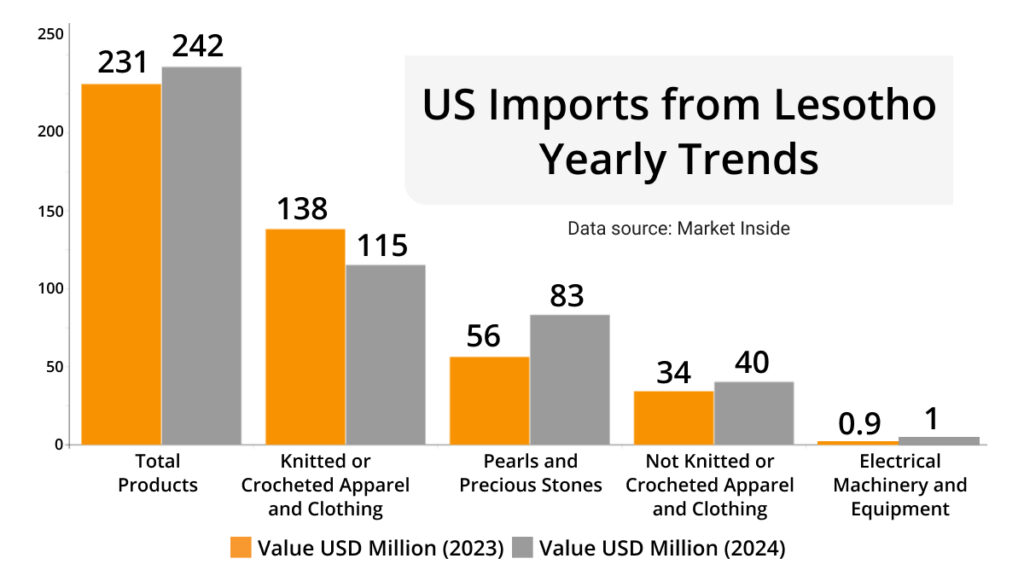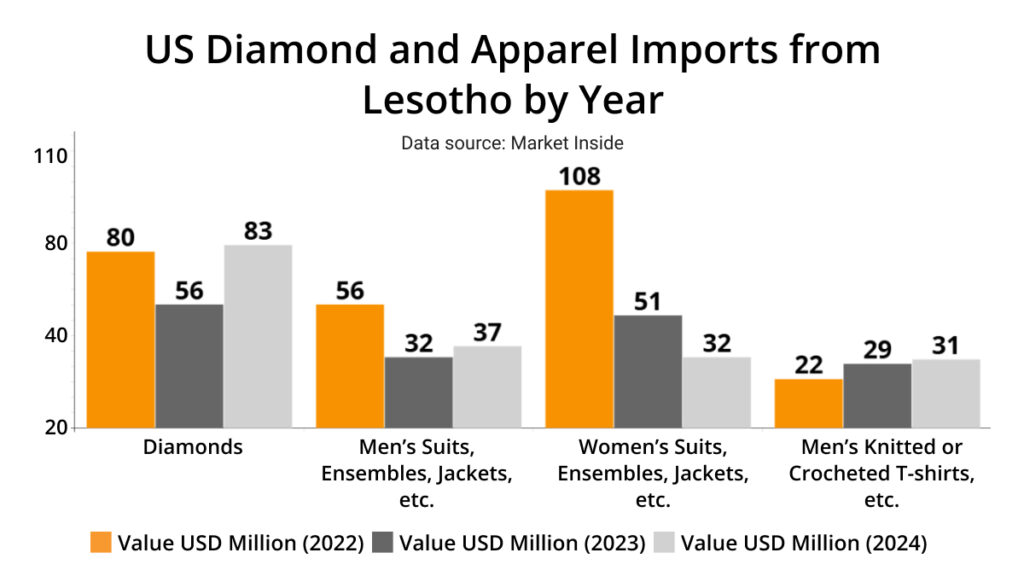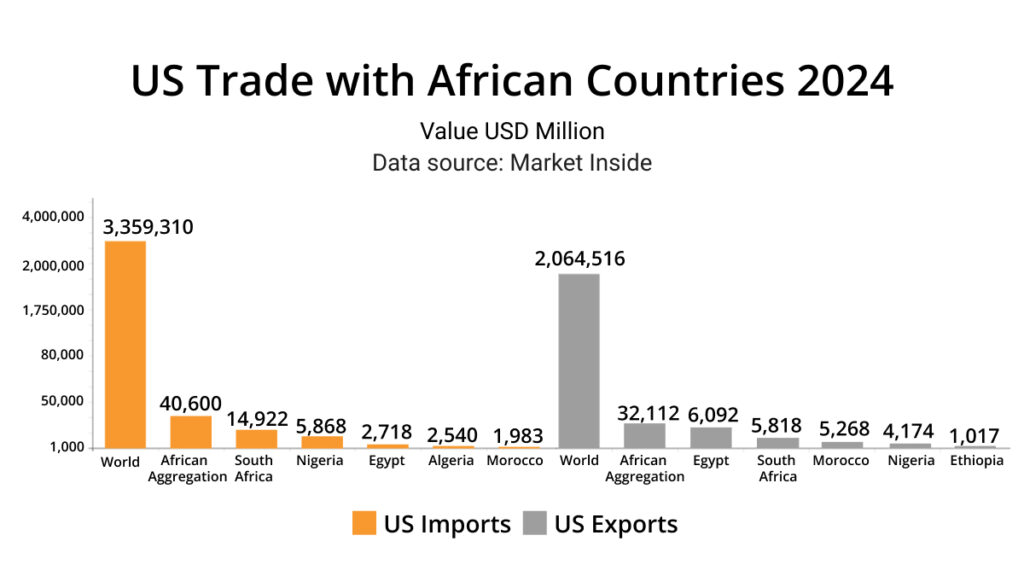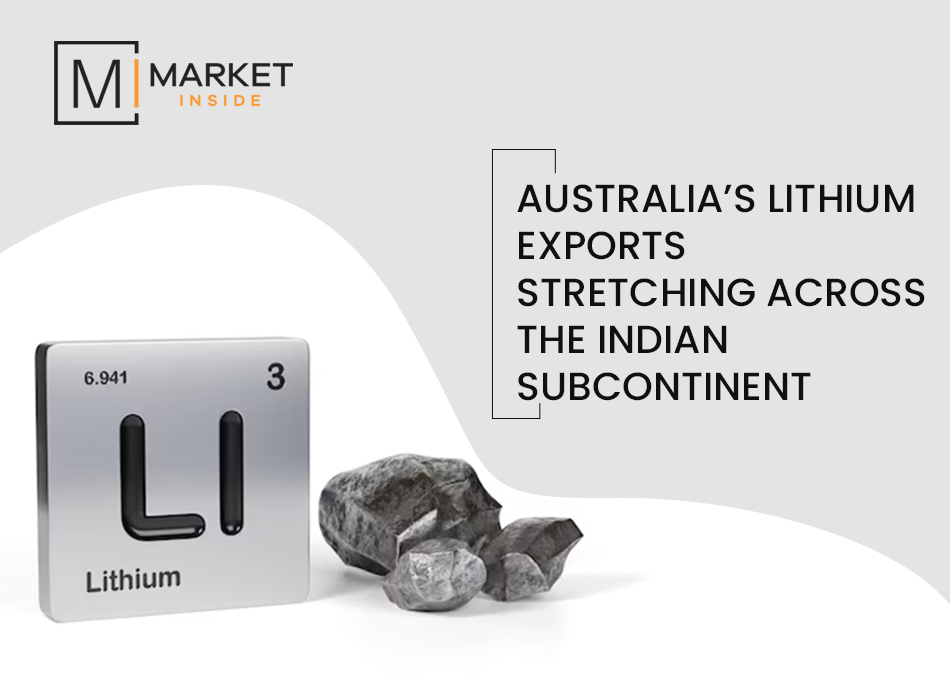Lesotho, a small landlocked nation in southern Africa, has recently found itself at the center of a significant trade dispute with the United States, primarily due to its exports of textiles—especially jeans—and diamonds. In April 2025, President Donald Trump imposed a 50% tariff on imports from Lesotho, the highest rate applied to any country. How US tariff will impact Lesotho’s apparel and metal industry, particularly jeans and diamonds? A market scenario is explained here with Lesotho export data and US import data.
50% US tariff on Lesotho – what is means
Lesotho was slapped with the Trump’s highest tariff rate of 50% on goods exported by the country to the United States. America has a big trade deficit with Lesotho, which sells textiles – including jeans and diamonds to the US.
The 50% rate for Lesotho was part of what Trump described as “reciprocal tariffs” imposed on imports from dozens of countries, including 20 in Africa. All nations face a minimum rate of 10%.
How much US imports from Lesotho
The United States has a limited trade with the African countries including Lesotho, however America deals in imports of apparel and metals with Lesotho. According to US trade data provided by Market Inside, US imports from Lesotho stood USD 242 million in 2024. Here’s check on US imports from Lesotho with total value and key commodities.

| US Imports from Lesotho | Value USD Million (2023) | Value USD Million (2024) |
| Total Products | 231 | 242 |
| Knitted or Crocheted Apparel and Clothing | 138 | 115 |
| Pearls and Precious Stones | 56 | 83 |
| Not Knitted or Crocheted Apparel and Clothing | 34 | 40 |
| Electrical Machinery and Equipment | 0.9 | 1 |
In recent years, Lesotho has been successful in selling textiles to the US, making the most of the African Growth and Opportunity Act (Agoa). This US legislation from 2000 allowed eligible African countries to send some goods to the US without having tariffs slapped on them.
Lesotho’s garment factories have made jeans for major American brands such as Levi’s and Wrangler in recent years.
Clothes make up nearly three-quarters of what Lesotho exports to the US – its second biggest trading partner after South Africa.
The value of that US trade amounts to more than 10% of its total annual national income. The extra costs that the tariffs will incur for American buyers could reduce demand and therefore have a big impact on Lesotho’s economy.

| Commodity | Value USD Million (2022) | Value USD Million (2023) | Value USD Million (2024) |
| Diamonds | 80 | 56 | 83 |
| Men’s Suits, Ensembles, Jackets, etc. | 56 | 32 | 37 |
| Women’s Suits, Ensembles, Jackets, etc. | 108 | 51 | 32 |
| Men’s Knitted or Crocheted T-shirts, etc. | 22 | 29 | 31 |
US trade with African countries 2024
Other African countries hit with extra tariffs include 47% for Madagascar, 40% for Mauritius, 37% for Botswana and 30% for South Africa.
Nigerian exports will be hit too – at a rate of 14%.
Kenya, Ghana, Ethiopia, Tanzania, Uganda, Senegal and Liberia were among those countries whose exports to the US will be subject to the baseline tariff of 10%. The US is not running a trade deficit with these countries.
US-South Africa relations have become increasingly strained since the start of the Trump presidency in January.
South Africa’s biggest export to the US is platinum, which may be exempted from the import tax. But its second biggest export – cars – will be hit hard.

| US Imports | Value USD Million | US Exports | Value USD Million |
| World | 3,359,310 | World | 2,064,516 |
| African Aggregation | 40,600 | African Aggregation | 32,112 |
| South Africa | 14,922 | Egypt | 6,092 |
| Nigeria | 5,868 | South Africa | 5,818 |
| Egypt | 2,718 | Morocco | 5,268 |
| Algeria | 2,540 | Nigeria | 4,174 |
| Morocco | 1,983 | Ethiopia | 1,017 |
African countries like South Africa, Nigeria, and Kenya have long-standing trade relations with the US, and the new tariffs could significantly affect existing economic ties.
In conclusion, Lesotho’s unexpected rise to the top of Trump’s tariff list highlights the complex interplay between global trade dynamics and national economic policies. What began as a booming industry driven by jeans and diamonds has now become a focal point of U.S. trade tensions. The 50% tariffs not only threaten the livelihoods of thousands of Lesotho’s workers but also underscore the broader impact of protectionist measures on developing economies. As Lesotho navigates this challenging landscape, the world watches closely, reminding us that in global trade, even the smallest players can make a big impact.




